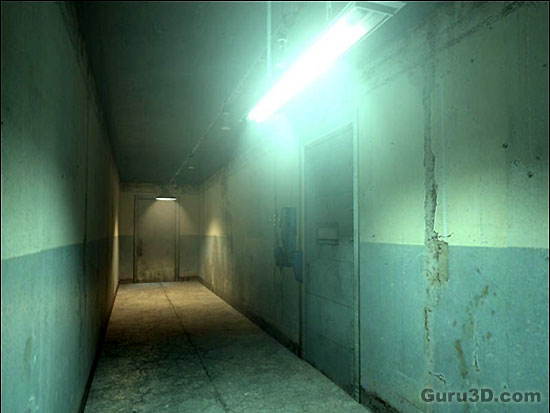Page 4
It has been widely discussed and argumented, ATI listened and did decide to implement SM3 into the new architecture. A good call of course, SM3 allows the programmer to implement some very nice shader programs that in certain cases can speed up your game. The world has moved on to SM3, people expect it to be integrated and so it has. There was very good integration, I might add, because SM3 seems to work pretty darn efficiently for ATI. It has to do with dynamic branching, but that matter is too far fetched to explain for this article to get into. What you need to know is that it works really well. More efficiency, that really is what the new card is all about. I'll be using that word in this review a lot. According to the chip designers every transistor in that core is constantly put to use to push the results onto your screen. Yes, efficiency !
Another feature, and it's not new to our ears at all, but it has had a little upgrade and is to do with texture compression capabilities. Almost any, well, any, graphics card nowadays makes use of texture compression technology. It's been discussed here on more then one occasion. I'm sure you recognize terms like S3TC and DXTC. Basically you reduce the byte-size of a texture while maintaining the best quality as possible. However, compression equals artifacts and thus image degradation at some point. 3Dc is a compression technology designed to bring out fine details in games while minimizing memory usage. It's the first compression technique optimized to work with normal maps, which allow fine per-pixel control over how light reflects from a textured surface. With up to 4:1 compression possible, this means game designers can now include up to 4x the detail without changing the amount of graphics memory required and without impacting performance.
3Dc was upgraded a little, and on the X1000 series of cards we now have 3Dc+ available to us. Let me just get it out of the way and move on. High quality normal map compression can (and could) be handled up-to a 4:1 ratio and works on any two-channel texture format. This updated + edition adds support for single-channel textures with 2:1 compression, which is good enough for stuff like luminance maps, shadow maps, HDR textures and more.
At the ATI presentation it became obvious that ATI focused extremely hard on HDR, just like NVIDIA did. They put a lot of money into their technology to support HDR in the best possible way. And they should as it just is a fantastic effect that brings so much more to the your gameplay experience. HDR is something you all know from games like Far Cry, extremely bright lighting that brings a really cool cinematic effect to gaming. This effect is becoming extraordinary popular. Valve have shown some HDR goodness in Half Life 2: Lost Coast also. The difference is obvious. HDR means High Dynamic Range. HDR facilitates the use of color values way beyond the normal range of the color palette in an effort to produce a more extreme form of light rendering. Typically this trick is used to contrast really dark scenery. Extreme sunlight, over-saturation or over exposure is a good example of what exactly is possible. The most simple way to describe it would be controlling the amount of light used present in a certain position in a 3D scene.
One last thing about HDR, ATI's HDR resolution can manage Antialiasing with HDR enabled, something that is not possible with the cards from the competition. The games need to be patched though, I expect one from CryTek (Far Cry dev) soon.
Let's let a screenshot do the talking:

Look clearly at the overexposed lighting effects, that's HDR. It'll bring a nice cinematic effect to gaming. Mind you, these screenshots did not have AA enabled, but with an upcoming Far Cry patch that will indeed be possible.
Right, let me place some numbers for you in a chart to give you an idea of where this product lies:
|
Radeon card |
Pixel Shader Units |
Vertex Shader |
Texture Units |
Max Threads |
Core Frequency |
Memory Frequency |
Memory |
Price in USD |
Available |
|
X1800 XT |
16 |
8 |
16 |
512 |
625 |
1.5 GHz |
256/512 gDDR3 |
549 / 599 |
Now |
|
X1800 XL |
16 |
8 |
16 |
512 |
500 |
1.0 GHz |
256 MB gDDR3 |
449 |
Now |
|
X1600 XT |
12 |
5 |
4 |
128 |
590 |
1.38 GHz |
128 / 256 MB |
199 / 249 |
Now |
|
X1600 PRO |
12 |
5 |
4 |
128 |
500 |
780 MHz |
128 / 256 MB |
149 / 199 |
Now |
|
X1300 PRO |
4 |
2 |
4 |
128 |
600 |
800 MHz |
256 MB |
149 |
Now |
|
X1300 |
4 |
2 |
4 |
128 |
450 |
500 MHz |
128 / 256 MB |
99 / 129 |
Now |
